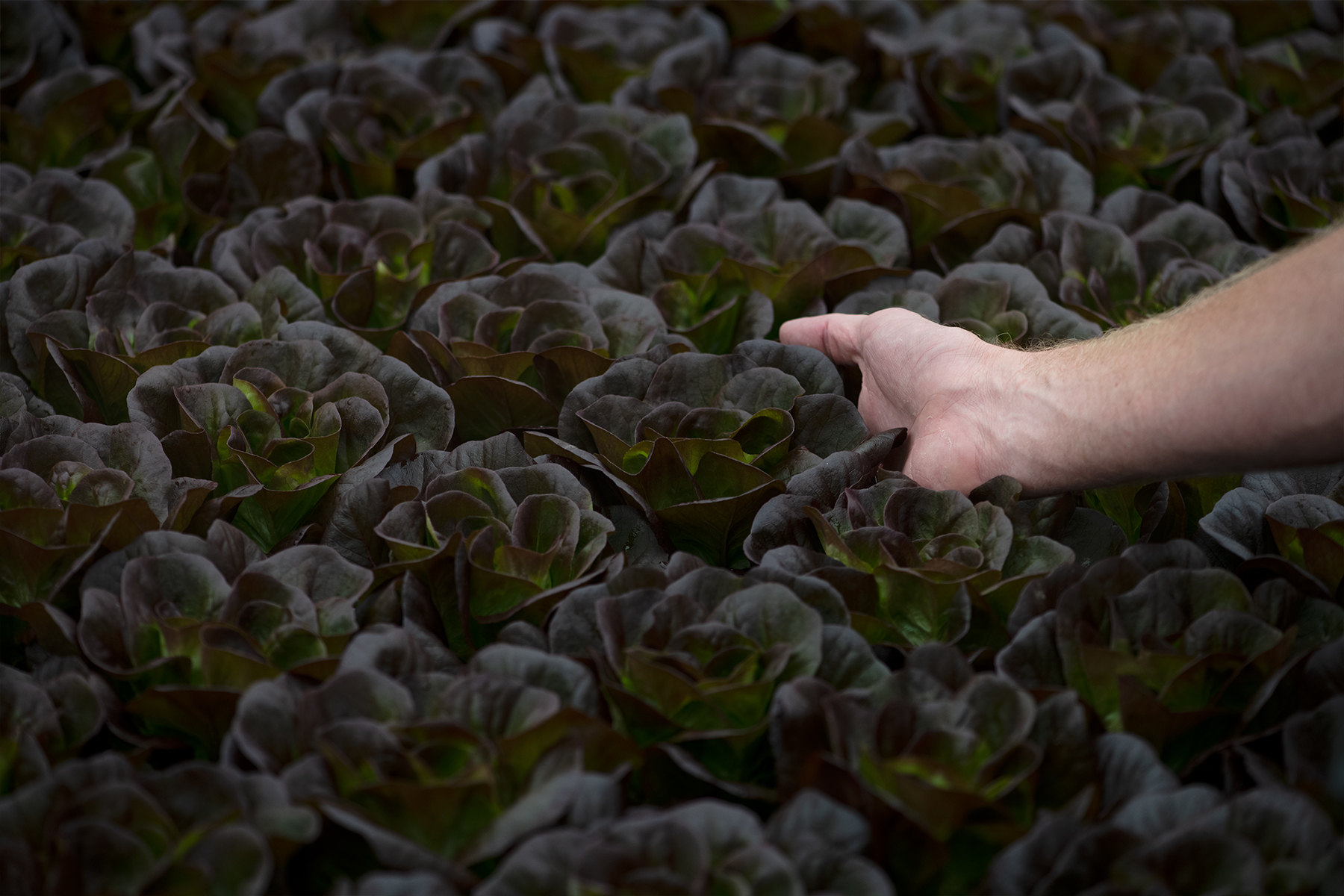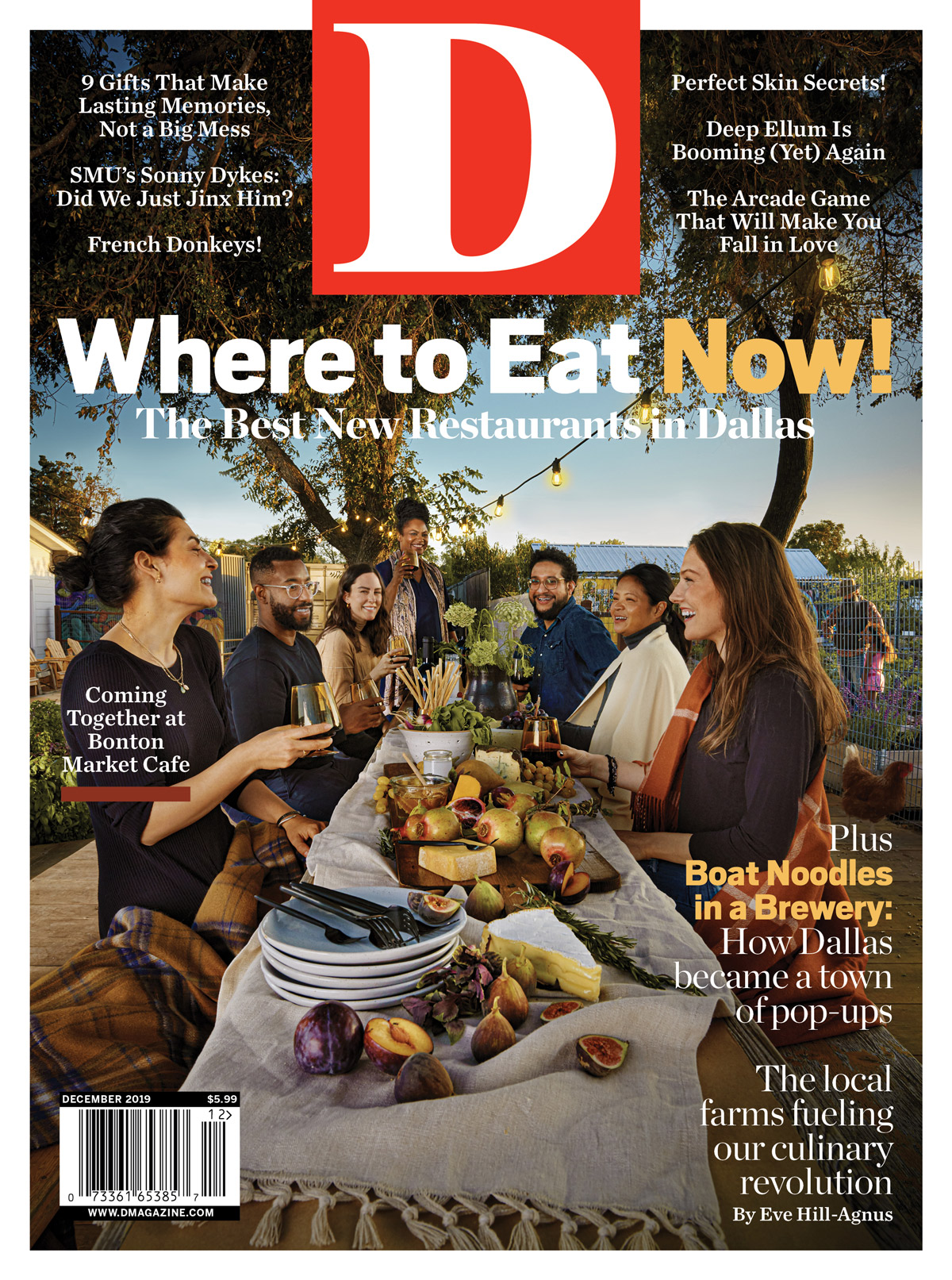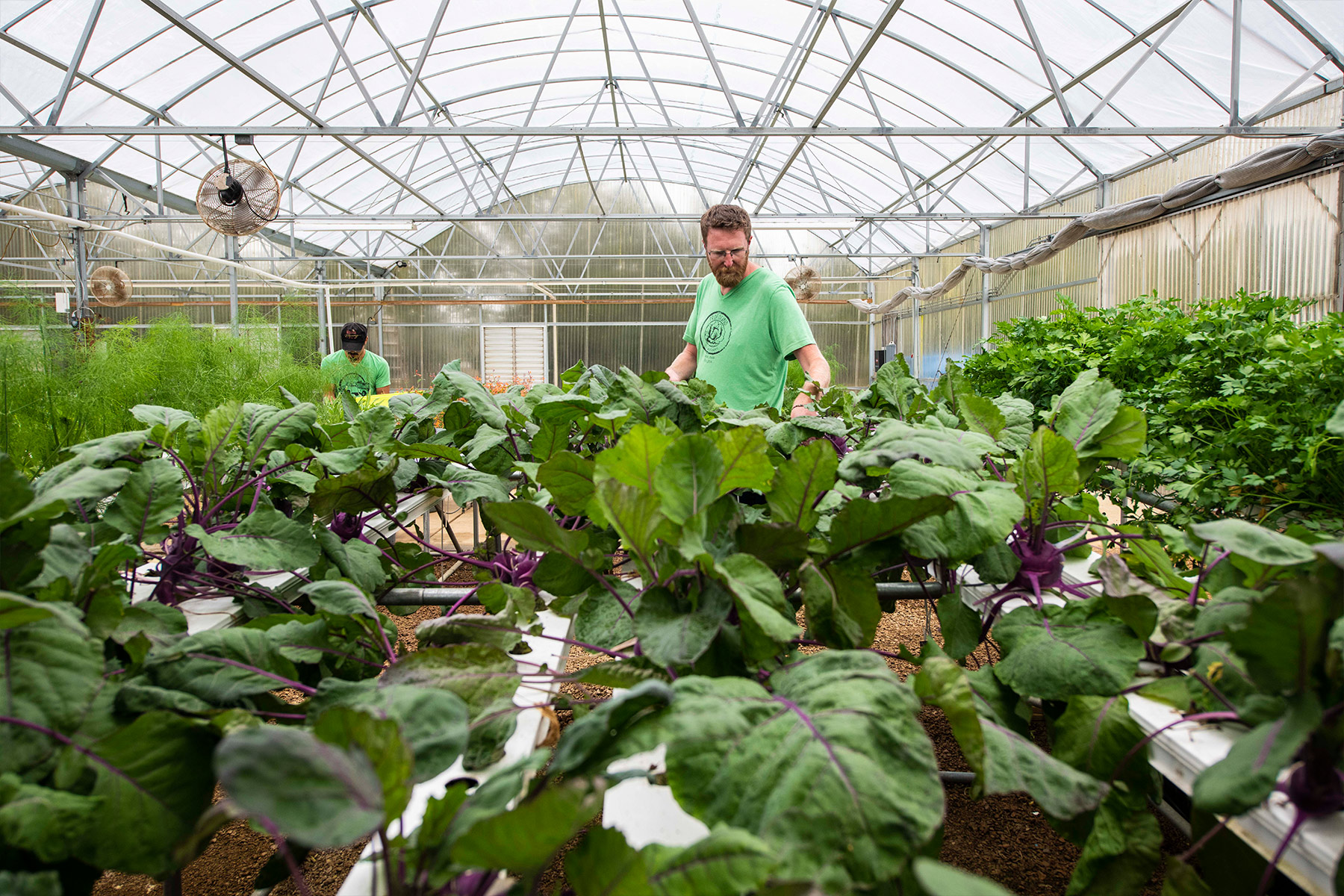The Dallas dining scene is not what it was five years ago, or even two years ago. Diners’ tastes have changed as they seek new adventures, insist on new standards of transparency in sourcing, and consider issues of sustainability and ethics. A new economic reality, via the Dallas real estate boom, changed the groundwork. And new possibilities in purveying have arisen. Cooks and diners are breaking ground as pop-ups and farmers become the poster children for a new model. Here’s what, where, and how we eat now.
PART ONE:
The Ingredients
David Uygur, the chef of lLucia and Macellaio, in the Bishop Arts District, arrived from Portland in 2001. He remembers landing with his wife, Jennifer, in a city where elite restaurants served out-of-season produce. He’d come from a place where quality meant strawberries harvested only in May from Sauvie Island, 30 minutes away. Now he was part of a tiny cohort of chefs, mostly recent transplants, trying to source local produce. It was going to be a challenge.
There were a few people already working to get the farm to the table, but their efforts were piecemeal. Tom Spicer was growing herbs and microgreens in East Dallas, behind Jimmy’s Food Store, and acting as middleman-broker with certain farms. And Yvaun Olsen from Chefs’ Produce, one of the first microsourced distributors, had found a way to get things like J.T. Lemley’s prized tomatoes to chefs when Lemley was selling only at the Dallas Farmers Market.
Graham Dodds, who had experience in Oregon and on the East Coast, did his own sourcing for Bolsa prior to opening in 2007. He found mulberries and goat from Windy Hill Farms near Austin; chèvre from Caprino Royale in Waco; chicken from nearby Windy Meadows Farm in Campbell; rabbit from a woman in Corsicana; and wagyu-style grass-fed, grass-finished beef from a ranch near Waxahachie, the only option not corn-finished out of state.
Small farms like Rae-Lili and Demases were just emerging then. When Comeback Creek in the East Texas town of Pittsburg started delivering directly to restaurants, Julian Barsotti practically built his menu at Nonna around whatever came in the door.
But despite a new era of consciousness in the kitchen, there was little diversity in the produce. Everyone operated on an island.
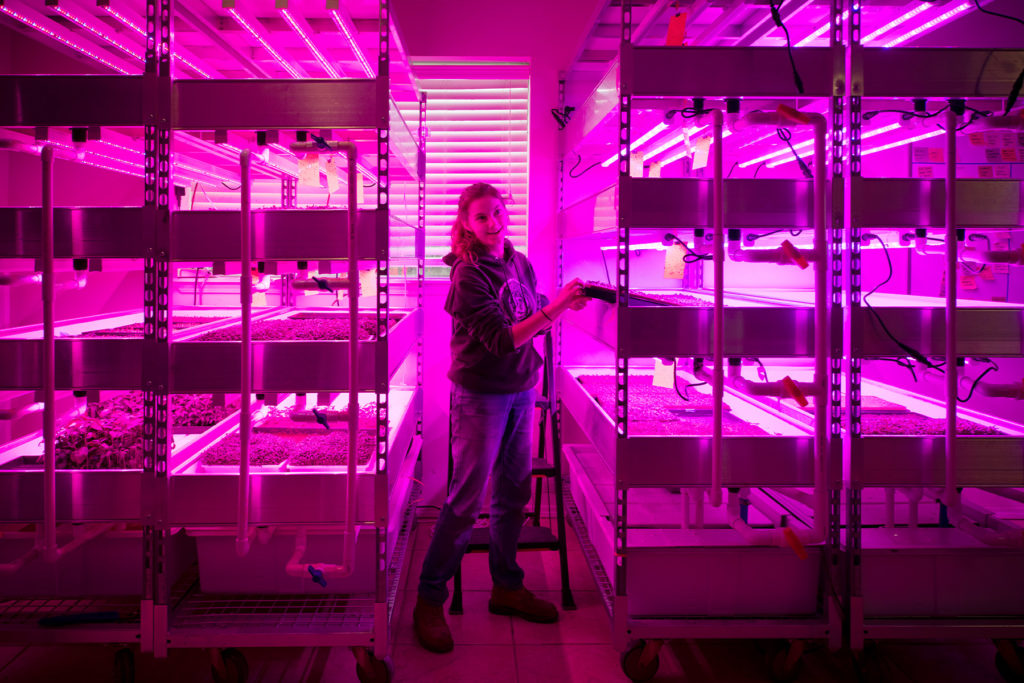
Amanda Vanhoozier, chair of Slow Food DFW, part of an international movement focused on local, artisanal production, had been involved with community gardens and farmers markets since the late 1990s. She’d witnessed robust chef-farmer relationships in Washington, California, and the East Coast. She tried to convince chefs here they could find extraordinary things on their doorsteps. Andrea Shackelford of Harvest and Robert Lyford of Patina Green Home and Market in McKinney and Matt McCallister of FT33 in Dallas were champions, with McCallister among the first to use hail-damaged produce and nudge backyard growers to diversify. But overall, the movement lacked traction. “We’re not ready,” Vanhoozier thought. “It’s over their heads.”
And then the tide started to shift. It was slow at first, influenced by those who were accustomed to, and starved for, local produce. “I call it an awakening,” Vanhoozier says. But the next hurdle, after stoking demand, was getting the food to the chefs.
The networking started small. Jeff Bednar had bought a farm in Lucas, between Plano and McKinney, in 2014, and two years later he was growing aquaponics, edible flowers, and herbs in greenhouses at what he called Profound Microfarms. He and Nelson Carter, who was raising organic chickens at Cartermere Farms in Celina, realized they could consolidate and bring each other’s goods to town, trading turns.
Bednar thought, Why stop with chickens? Chefs were getting excited about whatever came into their kitchens, so he started dropping off mushrooms from Tree Folk Farm and duck eggs from Quack Heads Farm, both in Denton, with his deliveries. Profound Foods, a microfarms distributor, was born.
Bednar’s goal was to streamline a process that was ad hoc and increasing in complexity. Profound Foods would become a distribution mechanism among chefs and local growers and ranchers, sparing those people scores of text messages. He served dinners in his greenhouse, inviting chefs to meet farmers, and he landed a $495,000 USDA Local Food Promotion Program grant that funded in October, allowing him to develop an online ordering system and hire Vanhoozier as farmer liaison.
Profound doesn’t hold inventory, but it is a facilitator. Chefs who couldn’t contemplate tending an individual grower relationship now could. Bednar bought a commercial washing machine, is trying to secure group insurance for the farmers and delivery drivers, and plans to implement reusable totes for deliveries. He now delivers twice a week and wants to make that five times.
“You can always do something else. You just have to accept that throwing it away would be the worst thing in the world.”
Joel Orsini
It wasn’t just about vegetables, though. The new era of greater collaboration and goodwill has extended to livestock. As chefs adept in whole-animal butchery have figured out extraordinary things to do with a pig, farmers have responded. Karyn and Calvin Medders, who founded Chubby Dog Farm in East Texas and quickly became known for their Mangalitsa-crossed pigs, had been eking out a living at farmers markets and through direct sales. When restaurants picked them up, McCallister and Shackelford first, it was a game changer.
Without fixed contracts, communication was key. When pigs are ready for slaughter, their parts have to find kitchens in three to four days. The Medderses learned the chefs’ preferences—scalded, skin-on, whole pigs for some—and adjusted fat qualities through feed in response to feedback, offering some leaner and some fatter for the growing number of chefs curing charcuterie. And with Profound Foods as a distributor, the Medderses were no longer limited to selling the whole pig. They could sell smaller parts to smaller kitchens. They donate blood or hocks to Khao Noodle Shop, Kamp Fire Eats, or the pop-up Not Your Lola’s, delighted to see how it ends up in various cuisines (Laotian, Cambodian, Filipino).
The same chefs eager to use off-cuts—tongue, oxtail, cheeks, chuck roll—also created a market for the full life cycle of a plant, from microgreens to blossoms. They began requesting unripe blueberries to pickle. They wanted tomato leaves, not just the fruit, and told farmers not to worry if the fruit, later, was splitting, because they were going to stew it. Bednar learned he could drop off 30 to 40 pounds of overgrown lamb’s quarters or parsley gone to seed. The nimbleness and innovation that ultra-seasonality necessitates bubbled to the surface. With the North Texas seasons, chefs had to learn to be flexible, because strawberries might all come over two weeks, as they did this spring. Or the chefs might get a single load of 60 pounds of shallots. The excess has to be pickled, fermented, dried, smoked, or brined, or some combination of these. A blossoming culture of no-waste emerged.
Joel Orsini, one of the city’s most avid preservers and larder builders, is among a growing number of chefs steeped in that culture. He went to culinary school in the Hudson Valley and worked in kitchens in New York, where an heirloom radish could cost more than even beef, and you learned to use every part of everything. At his most recent restaurant, Booty’s (formerly Izkina), Orsini might puzzle over marigold seeds before finding a use for them in a cure for Gulf fish.
Other small, chef-driven restaurants like Misti Norris’ Petra and the Beast that embraced an ethos of no-waste, root-to-stem local ingredient use began pulling out the stops, doing wonderfully inventive things. At Macellaio, Uygur might include pork skin in charcuterie like a mortadella or let it add richness to a braise. From a 275-pound hog, he says, the waste fits in his palm.
Diners, too, have become more adventurous. Uygur refers to a point when he decided to make potentially challenging ingredients approachable rather than “willfully weird,” helping diners find a way to love duck tongues (“We just did a fancied-up onion dip”). The message he aims to convey is simple: “It’s delicious. Otherwise we wouldn’t be serving it.” He and others see diners opening up, wanting to know where their food comes from, developing a sense of terroir.
Peja Krstic, of the gorgeously sourced Mot Hai Ba, sees a golden age of chef friendships pushing the scene forward. Chefs are sharing sources and ideas in ways that they hadn’t because now they care enough to converse and build a community. The future of Dallas, as they all see it, is full of promise, with room to grow.
We still need more intraseasonal produce options to fill gaps. We need more young farmers and more education for first-generation farmers (not just YouTube or podcasts). More medium-size farms. More chefs thinking innovatively about whole-animal use and off-cuts. Better options for fish. Rabbits and ducks. Prices that reflect the true cost of local systems. Fewer rote menus. More composting. Communication so tight that farmers can plan ahead for a season. Dodds would like to see movement toward just a smattering of meat for sustainability. Uygur would like to see diners opt for something that’s not farmed salmon.
As we went to print, Profound Foods was planning a farm dinner to fund a new greenhouse. And Orsini had left Booty’s and its rooftop garden, where he’d cured jujubes and fish sauce and tended bees, to launch farm dinners under his own company, building on grower relationships knitted over several years. He planned to set up hand-built tables and chairs and cook on the bed of his ’65 Chevy C10, like a latter-day chuck wagon, espousing what may be a radical new model, where the restaurant is a field.

PART TWO:
The Space
About two years ago, thanks to a bonanza of openings, Dallas had too many restaurants and not enough experienced workers to staff them. Brian Luscher, who closed The Grape in October, calls it The Great Labor Boom or Bust. He says he saw chefs working the line and washing dishes as underqualified personnel filled all tiers of positions. Restaurateurs scrambled as staff, knowing they were in demand, changed jobs and chased better wages.
Some balance has returned, but Shannon Wynne estimates the city is still over-restauranted by as much as a third. Established restaurateurs like Luscher and Wynne, as well as Nick Badovinus, Jack Perkins, and Julian Barsotti, say the staffing issue is directly related to a real estate boom that happened even as brick-and-mortar retail suffered. Restaurants still deliver an experience that Amazon can’t co-opt, so developers put more restaurants in spaces that once would have housed retail.
Meanwhile, rents have risen. And some restaurateurs now face triple net leases (which require the tenant to pay all expenses on the property, including real estate taxes, insurance, and maintenance). Wynne wondered in the spring at what point these people would opt out of real estate altogether. And in a way, some already have, via pop-ups, supper clubs, and kitchen takeovers.
“I like that you have to go somewhere, build your content, build your food. As a chef, I like my back being against a wall. It makes me work harder.”
Dien Nguyen, Wabi House
Pop-ups are one-time-only events in venues ranging from parking lots to lofts, a post-recession phenomenon based on the arrival of social media, fueled by cultural and culinary inquisitiveness and a dining population younger and more willing to wander. To hunt and seek—that’s part of the fun.
For those behind a pop-up, it’s a chance to experiment, express themselves, play around with new ingredients and techniques in lower-stakes situations. Chefs can focus on a dish or two and see what can actually be sold, while practicing prepping and sustaining a service.
Misti Norris was a trailblazer in this regard. In a remodeled gas station on Haskell Avenue, she began serving tasting-menu pop-up dinners that she hoped might become permanent. Savvy diners learned that’s where they could find the whimsical, brilliantly layered creations that would earn national attention and put Norris on the James Beard Foundation’s radar. Even after the little place on Haskell took on full-time form as Petra and the Beast, it still felt like a pop-up. She initially served complex food out of paper boats three days a week. The legacy continues with tasting-menu dinners on Saturday nights, expressions of Norris’ unfettered imagination that draw people together.
Justin Holt began making ramen for the staff family meals as a chef at Lucia, following an obsession. Then, moonlighting at bars like Tradewinds Social Club, Ten Bells Tavern, and Industry Alley Bar, Holt set up pop-ups of Japanese street food, going after dinner service to cook more for a growing after-hours crowd. Mingling against the backdrop of potholed parking lots and corrugated tin, they gathered for post-midnight tonkotsu, for extraordinary mazemen and yakitori.
The synergy of bar and pop-up makes sense: a welcome forum free of charge and savory, flavor-forward bites ideal to accompany drinks. Sous chefs at restaurants are popping up, among other places, at breweries around town, bringing Filipino adobo and banana ketchup. They have “a captive audience that’s maybe a little bit tipsy,” Holt says, maybe in a “dive-y neighborhood spot where people aren’t going to judge us super harshly when we show up at midnight and serve until 2 am.”

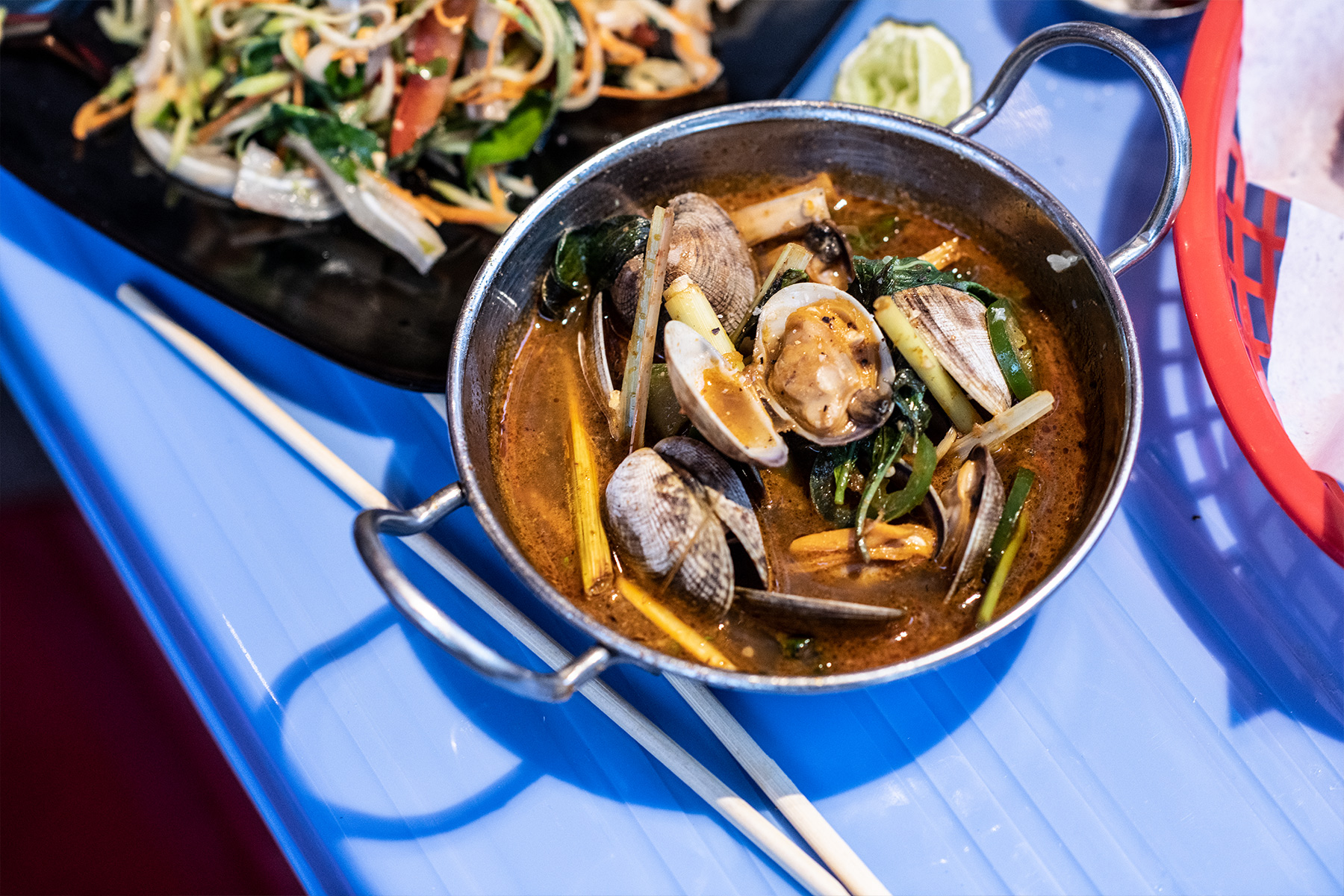
Similarly, Donny Sirisavath, who made a name for himself with his Laotian Khao Noodle Shop, which was deemed the second-best new restaurant in the country by Bon Appétit within nine months of its opening, began three years ago with impromptu stints at The People’s Last Stand publicized only by word of mouth. He had an untrained team, no Instagram presence, and no name to trade on, but he did have captivating boat noodles. (He was then making the rice noodles by hand; at that volume, you can.) Like Holt and others, this was the food he wanted to cook from the heart—in his own case, as a way to heal from the loss of his mother. Another way to think of a pop-up, then, is as a “family meal” we can participate in.
Nicole Gossling started something closer to the model of the secret, exclusive, under-wraps supper club. In 2011, she launched a weekly sit-down dinner that initially roved and then took up permanent residence in a rented space in Deep Ellum ($600 for 24 hours in a commercial kitchen and dining room). She used that limitation as sort of a prompt, giving herself 24-hour periods to write seven-course tasting menus based on 30 pounds of mystery local produce that she picked up weekly. Her culinary challenges to herself played out in a space that changed with every iteration. One evening, guests might be enveloped in the sensory deprivation of a “dining in the dark” dinner. Chefs like Tim Byres and John Tesar also hosted pop-ups in the same building.
At the supper-club dinners put on by the trio of chefs behind Frank Underground, guests might find themselves slurping oysters in a Deep Ellum loft with strangers, drawn from a lottery, paying a suggested voluntary donation of $150 for the privilege of exclusivity. Here, the communal table is also part of what is intended to be experiential, another way to draw diners out of their comfort zones.
If the pop-up brings exposure, the supper club, with its finite size and hypercontrolled environment, brings focus. I can trace a direct line from Peter Barlow’s work at Niteshade Chef Collaborative, his underground “supper lab,” to the tweezered plating of the avant-garde restaurant Fauna. Supper clubs can finger the pulse of a current trend. The mezcaleria Las Almas Rotas started as a supper club.
Temporary kitchen takeovers are another outlet, chefs creating pop-ups within existing restaurants, their own or others’, as a boon for themselves and their followings. Andrew Chen and Dien Nguyen executed a takeover in the summer of 2017 at Chen’s Monkey King Noodle with a chef from Uchi, as well as pop-ups at Nguyen’s Wabi House, where several hundred people lined up outside for a 5 pm opening for bone-marrow tsukamen (dipping ramen) and brisket slices.
According to many like Nguyen, Dallasites eat out incessantly but, until recently, not with a particularly curious palate. Still, and perhaps all the more so, restaurateurs jump at chances to be creative. You can see it in the pop-up at Malai Kitchen that, once a year, turns the sidewalk in front of the West Village restaurant into a Hanoi street market scene, with toilet-paper rolls for napkins and a chalkboard menu that reads, for one day, Vietnamese lung and tongue stew with calamansi-tamarind sauce and green mango salad laced with marinated pig ear. And $1 beer.
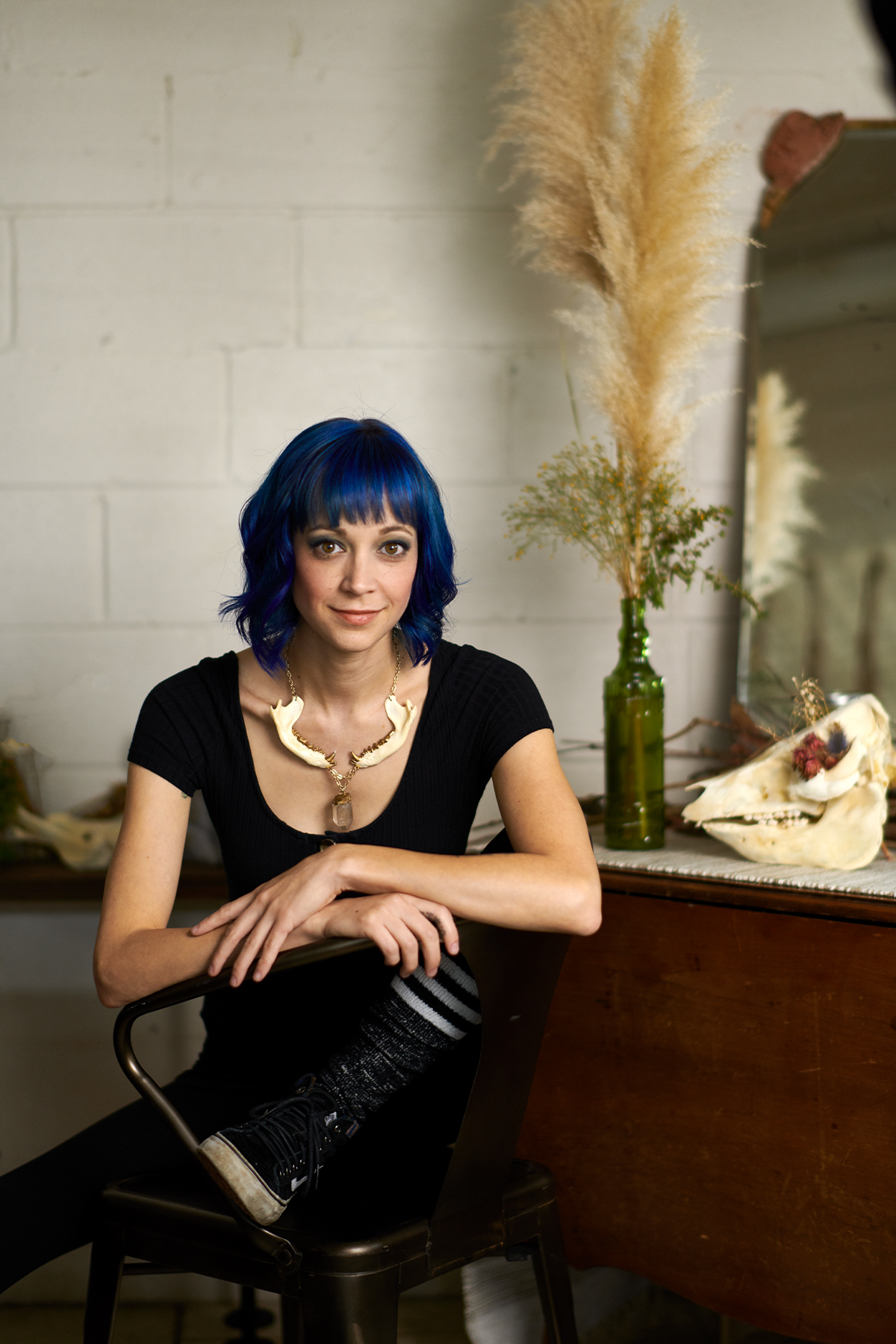
A chef like Mot Hai Ba’s Peja Krstic uses his restaurant to foster such creativity. He let Seth Brammer and Josh Sutcliff, disruptors extraordinaire with impeccable culinary credentials, cover his door with their own logo and redo the interior for one night. He has welcomed pastry-chef pop-ups and the sustainable sushi pop-up Fox and the Wolf, inviting people he sees as having talent, because a rising tide lifts all boats. And people need spaces for their boats.
Then there’s the case of chefs like José’s Anastacia Quiñones-Pittman, whose ultra-inventive tacos de tacha served on flavor-infused tortillas were born as a pop-up during a hiatus between restaurants. She’s inviting people into collaborative pop-ups at José, which has become the province of guest chefs from places like Los Angeles, who might themselves be attached to genre-bending, taste-making pop-ups—a cross-national cross-pollination.
You’ll also find these kinds of collaborations at collective gatherings like the Asian Night Market. The festivals that bring together all the Southeast Asian pop-ups on the muraled patio of Reyna Duong’s Sandwich Hag (also a cult spot that found its following as a pop-up) might play host to an ephemeral group’s debut or become the place where the context shines light on heretofore unfindable fare like pancit, a Filipino noodle dish.
Do pop-ups solve the problems of the dining scene? Some might say that in a time of confusion, they only add to the melee. But this is where things are buzzing. This is where experienced chefs and freewheeling cooks looking to local produce are animated by a similar feeling: we are the food movement.
If you’re not paying attention, you’re missing it.


